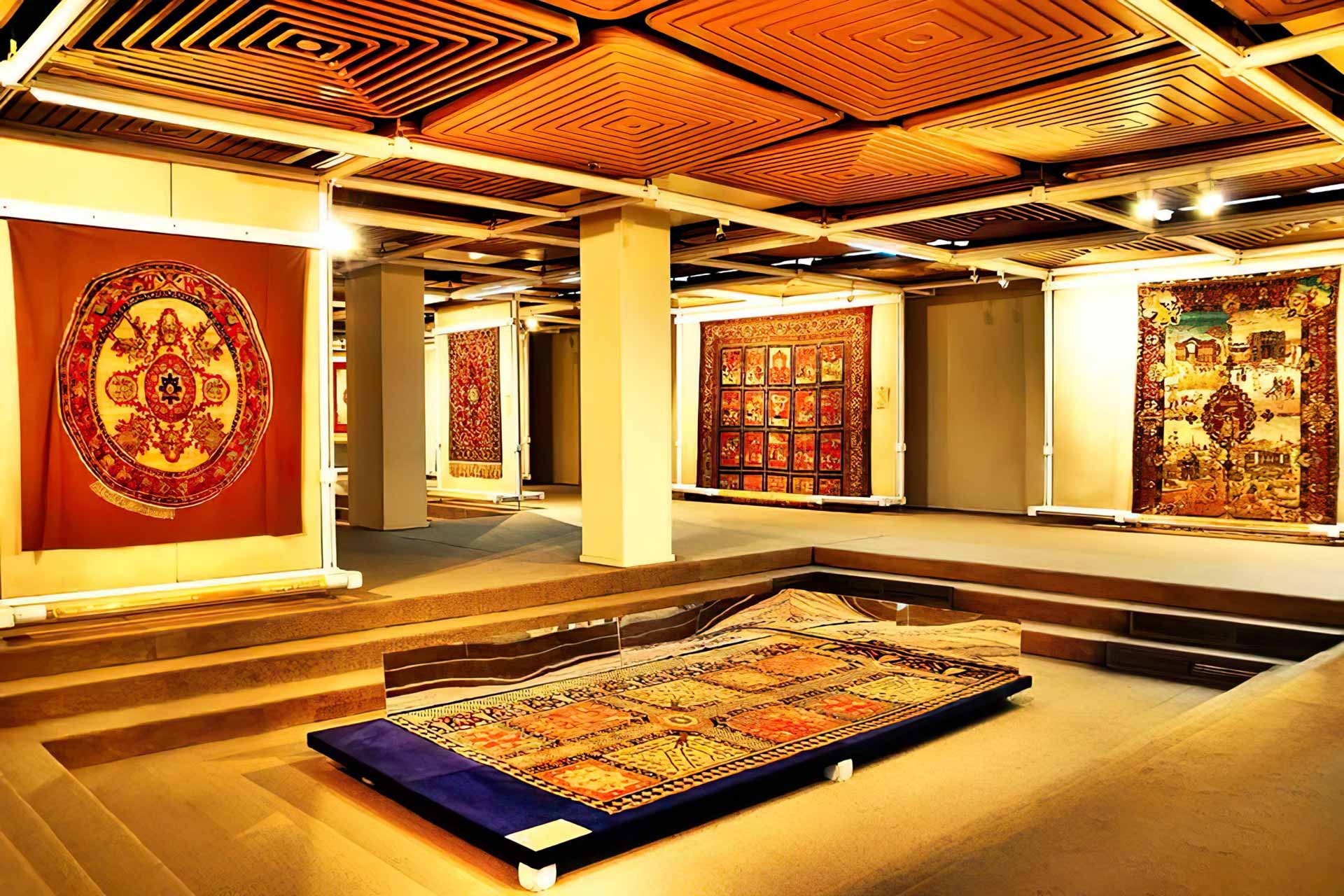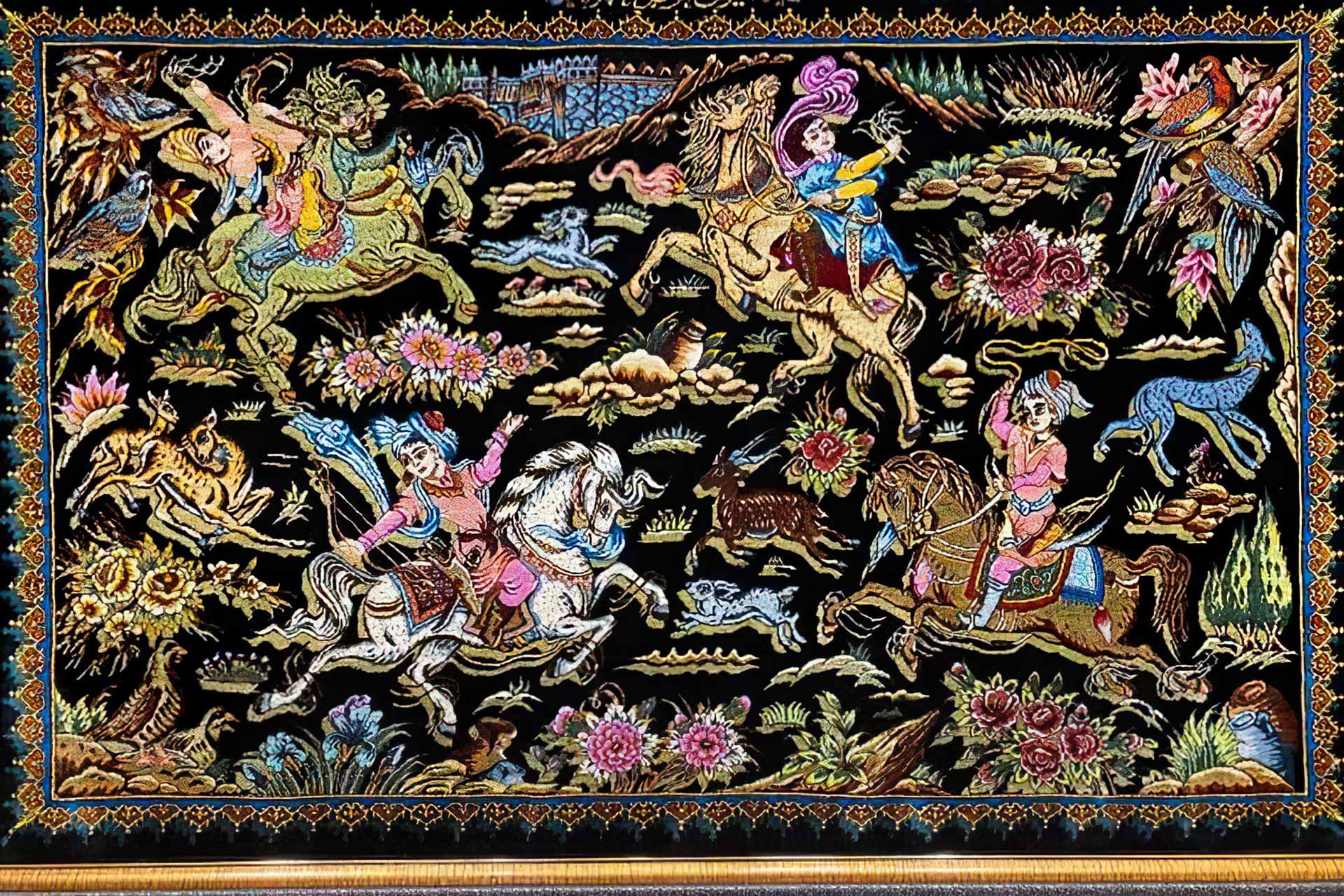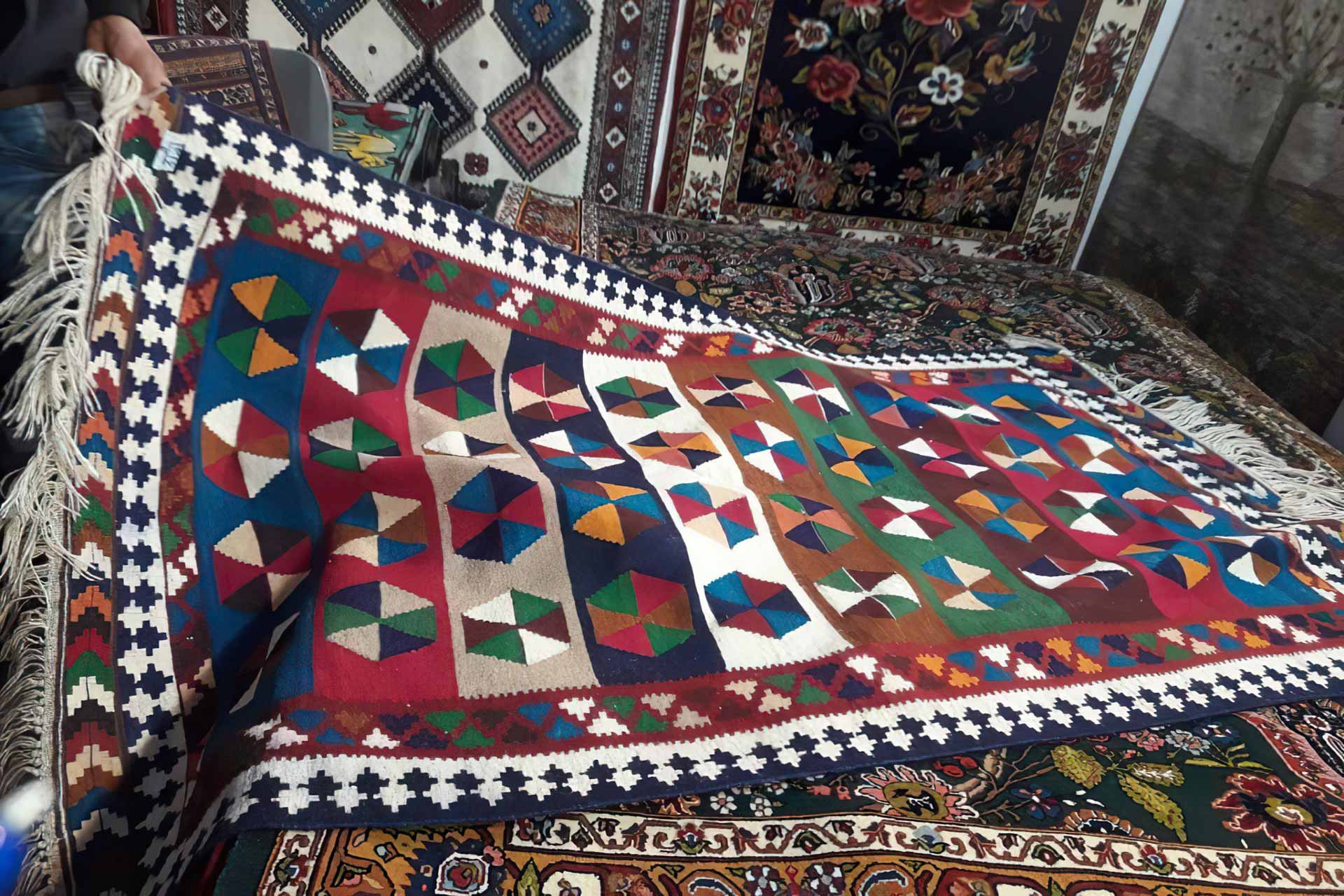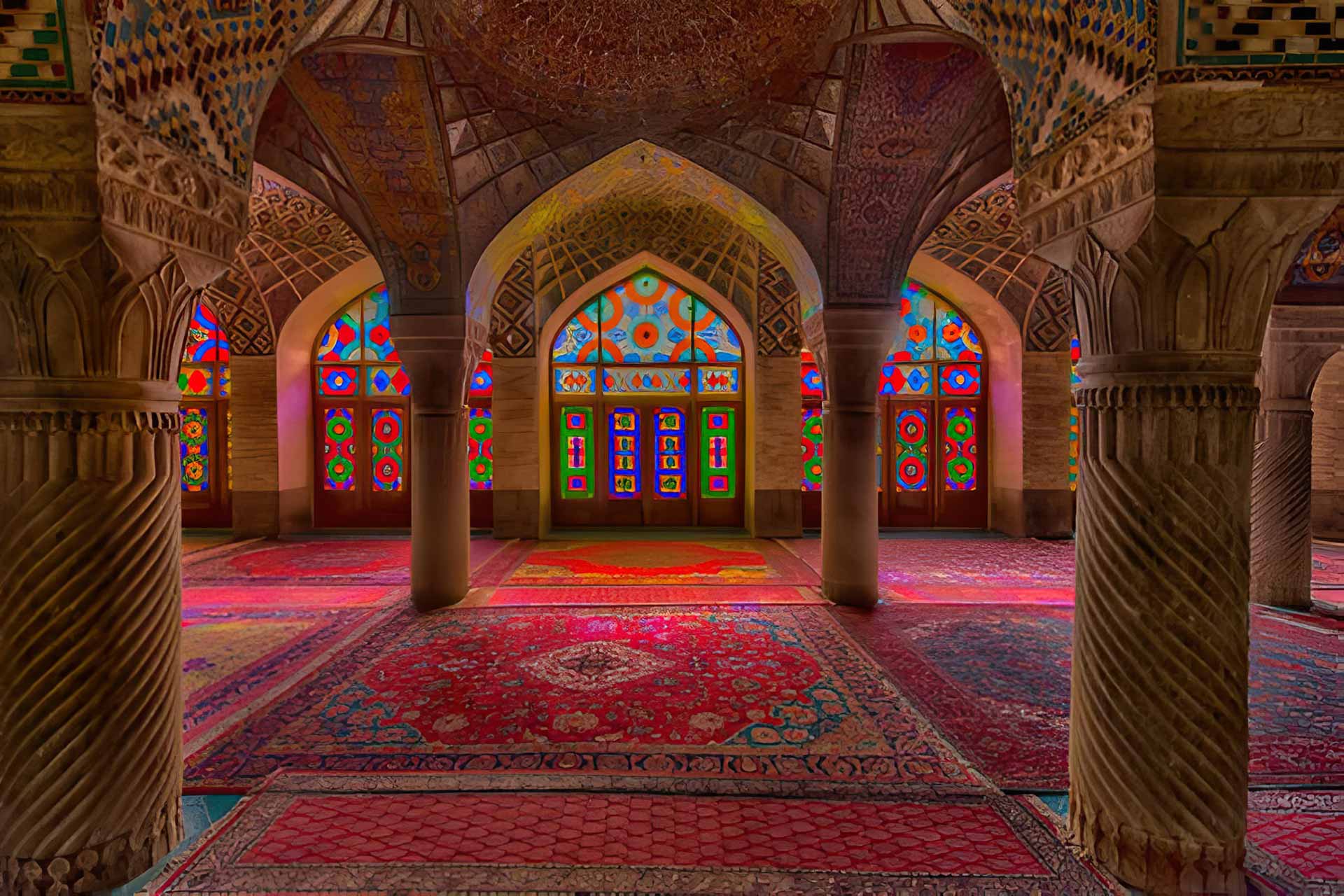Introduction
Persian carpets are among the most prominent symbols of traditional arts. Iranian rugs not only captivate the eye with their beautiful designs and patterns but also carry deep meanings within. These motifs are not merely for decoration; each one holds symbolic significance hidden within the layers of the rug. Every knot and design in this ancient art tells a story of Iran’s rich history and culture. For this reason, handmade Persian carpets are recognized as one of the world’s artistic treasures.
Persian Carpets: A Symbol of Iran’s Culture and Art
Persian carpets are regarded as one of the key symbols of Iran’s culture and art. Their vibrant history is filled with colors and designs that reflect the depth and richness of the country’s heritage. Every Persian rug resembles a living painting that narrates a tale of life, history, nature, and the people’s beliefs. In this section, we’ll explore the connection between Persian culture and the intricate designs of Persian carpets, showing how each rug becomes a symbol of Iran’s thousands-year-old culture.
Motifs and Patterns: Reflections of Culture and Beliefs
The motifs and designs found in Persian carpets stem from Iranian beliefs, myths, and daily life. For instance, the “boteh jegheh” pattern, one of the most famous Iranian designs, symbolizes a bent cypress tree, representing resilience and endurance against hardships in Iranian culture. This pattern is repeated with slight variations across different regions of Iran, highlighting its cultural importance.
Animal patterns are also a recurring theme in many Persian carpets. The lion, for instance, holds a special place in Iranian culture as a symbol of courage and strength. The lion’s image often plays a key role in many carpet designs. Additionally, birds like the nightingale and peacock, representing love and beauty, frequently appear in both Persian carpets and kilims.
Persian Carpet Patterns: Each Knot Tells a Story
Colors in Persian carpets also carry emotions and messages. Red, widely used in Persian carpets, symbolizes life, love, and warmth. This color is especially prevalent in tribal rugs, particularly those from the Turkmen and Baluch regions. On the other hand, blue, symbolizing peace and spirituality, is commonly found in the carpets of central Iran, including Kashan and Isfahan. The deep and turquoise blues in these carpets reflect the skies and flowing waters, which in Iranian culture are symbols of purity and inspiration.
The Global Importance of Persian Carpets: From Palaces to Museums
 Persian carpets adorn homes and mosques in Iran and hold a special place in palaces, museums, and art galleries worldwide. They are recognized as symbols of Iranian art and culture and are unparalleled in beauty, quality, and historical value.
Persian carpets adorn homes and mosques in Iran and hold a special place in palaces, museums, and art galleries worldwide. They are recognized as symbols of Iranian art and culture and are unparalleled in beauty, quality, and historical value.
Palaces and Historical Mansions
In many royal palaces and historical mansions, Iranians have used their carpets as one of the most important interior decorations. For instance, in European palaces such as the Palace of Versailles in France and Buckingham Palace in England, Iranians have, for centuries, used their carpets as symbols of power, wealth, and art. These carpets attract attention not only as floor coverings but also as valuable works of art.
Museums and Art Galleries
Persian carpets are proudly displayed in prominent museums worldwide. The Metropolitan Museum in New York, the Victoria and Albert Museum in London, and the Louvre Museum in Paris are just a few examples of institutions that house remarkable collections of Persian rugs. These museums often showcase these carpets in special exhibitions, attracting art and history enthusiasts alike.
Cultural Symbols in International Celebrations and Events
Persian carpets are also used in international festivals and events as symbols of Iranian culture and art. In global exhibitions like Expo, Persian carpets are displayed as representatives of authentic Iranian art, constantly receiving praise from visitors.
Historical and Archaeological Artifacts
Many Persian carpets preserved in museums and galleries are centuries old. These carpets are crafted with special techniques using natural materials, and each one narrates a story of Iran’s history, culture, and beliefs. For instance, the Pazyryk carpet, which is over 2,500 years old, is one of the oldest known carpets and showcases the skills and precision of Iranian weavers.
Influence on Modern Artists and Designers
Persian carpets have always been a source of inspiration for modern artists and designers. Many interior designers and fashion creators incorporate Persian carpet motifs and colors into their work. This influence is so profound that even in contemporary designs, traces of traditional Iranian art can be seen.
Economic and Cultural Impact
Persian carpets are one of Iran’s most important non-oil exports, generating millions of dollars annually. European, North American, and East Asian countries are the largest consumers of Persian carpets. This demand highlights the global importance of Persian carpets and their special place in international markets.
Types of Persian Carpets: From Rugs to Kilims
 Persian carpets are divided into different categories, each with unique characteristics. Some of these types include:
Persian carpets are divided into different categories, each with unique characteristics. Some of these types include:
- Carpet: The most famous type of Persian carpet with intricate weaving and delicate patterns.
- Kilims: Simpler woven rugs, typically made in rural areas of Iran.
- Small Rugs: A smaller version of the Persian carpet, ideal for smaller spaces.
- Zilu: Coarser woven rugs with simpler patterns, often found in Iran’s desert regions.
Challenges and Solutions in Persian Carpet Exports
 Despite their global fame and popularity, Persian carpet exports face several challenges. These include inadequate transportation methods, fierce global competition, and the presence of counterfeit products, all of which can negatively impact the trade of this valuable commodity.
Despite their global fame and popularity, Persian carpet exports face several challenges. These include inadequate transportation methods, fierce global competition, and the presence of counterfeit products, all of which can negatively impact the trade of this valuable commodity.
Inadequate transportation methods increase costs and reduce the quality of exported carpets. These issues not only slow down the export process but also affect the global reputation of Persian carpets. Additionally, intense competition with producers from other countries and the influx of counterfeit products make conditions more challenging for Iranian exporters.
However, Mansion Consulting has provided outstanding services to overcome these obstacles for Persian carpet exporters. By leveraging their extensive experience in the global market, Mansion offers specialized advice to exporters and supports them in all stages of exportation—from choosing the best transportation methods to marketing and selling in international markets. By working with Mansion, Persian carpet exporters can be assured that all challenges, including transportation and global competition, will be managed efficiently and professionally.
The Future of the Persian Carpet Industry: From Tradition to Modernity
With changes in global tastes and the need for innovation in design, the Persian carpet industry must also adapt to new conditions. One solution for maintaining and expanding global markets is the combination of traditional craftsmanship with modern designs and the use of high-quality materials. This fusion can open new markets for Persian carpets and help the industry thrive. The Persian carpet is not just a commercial product but an unmatched artwork that introduces Iran’s history, culture, and art to the world.




